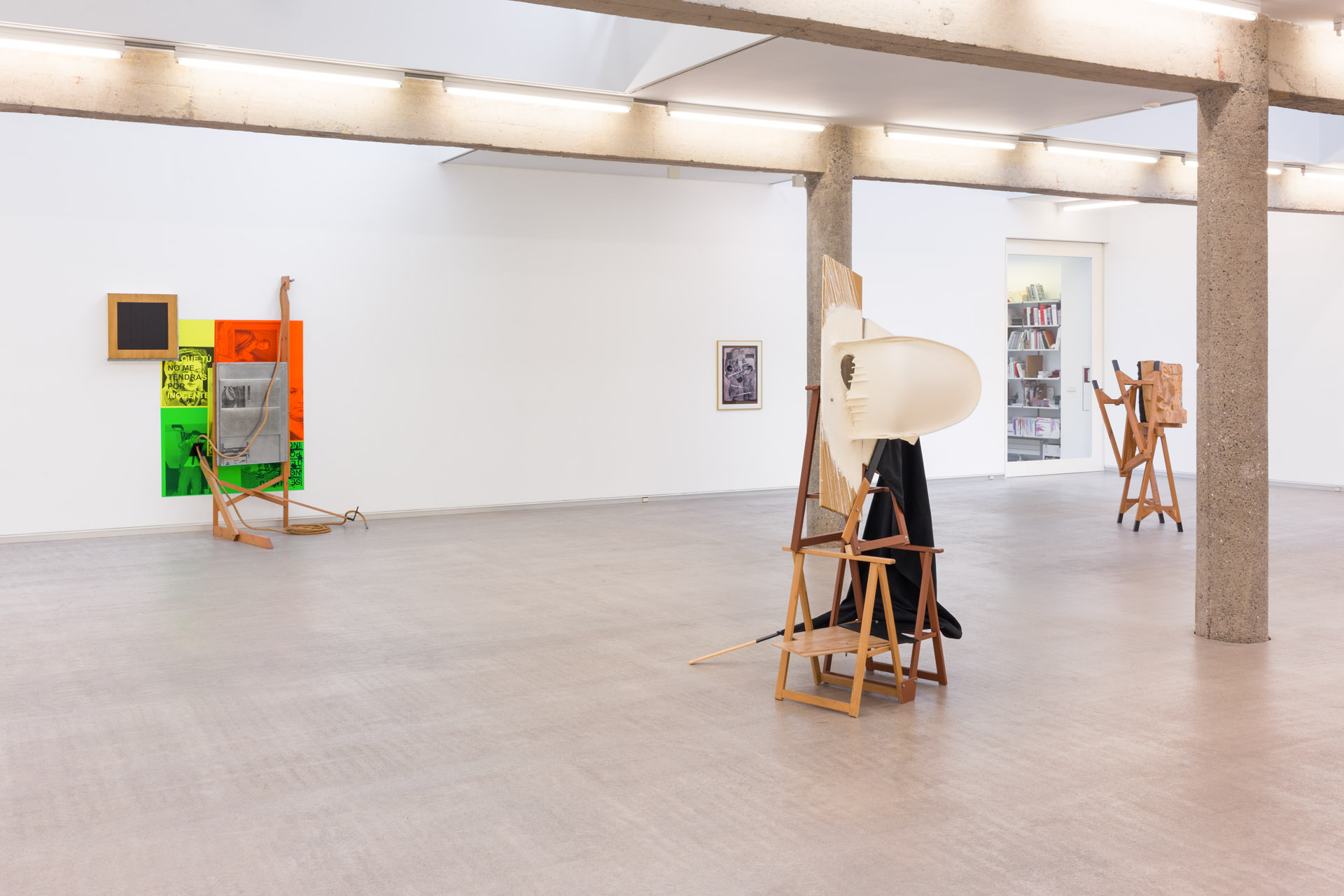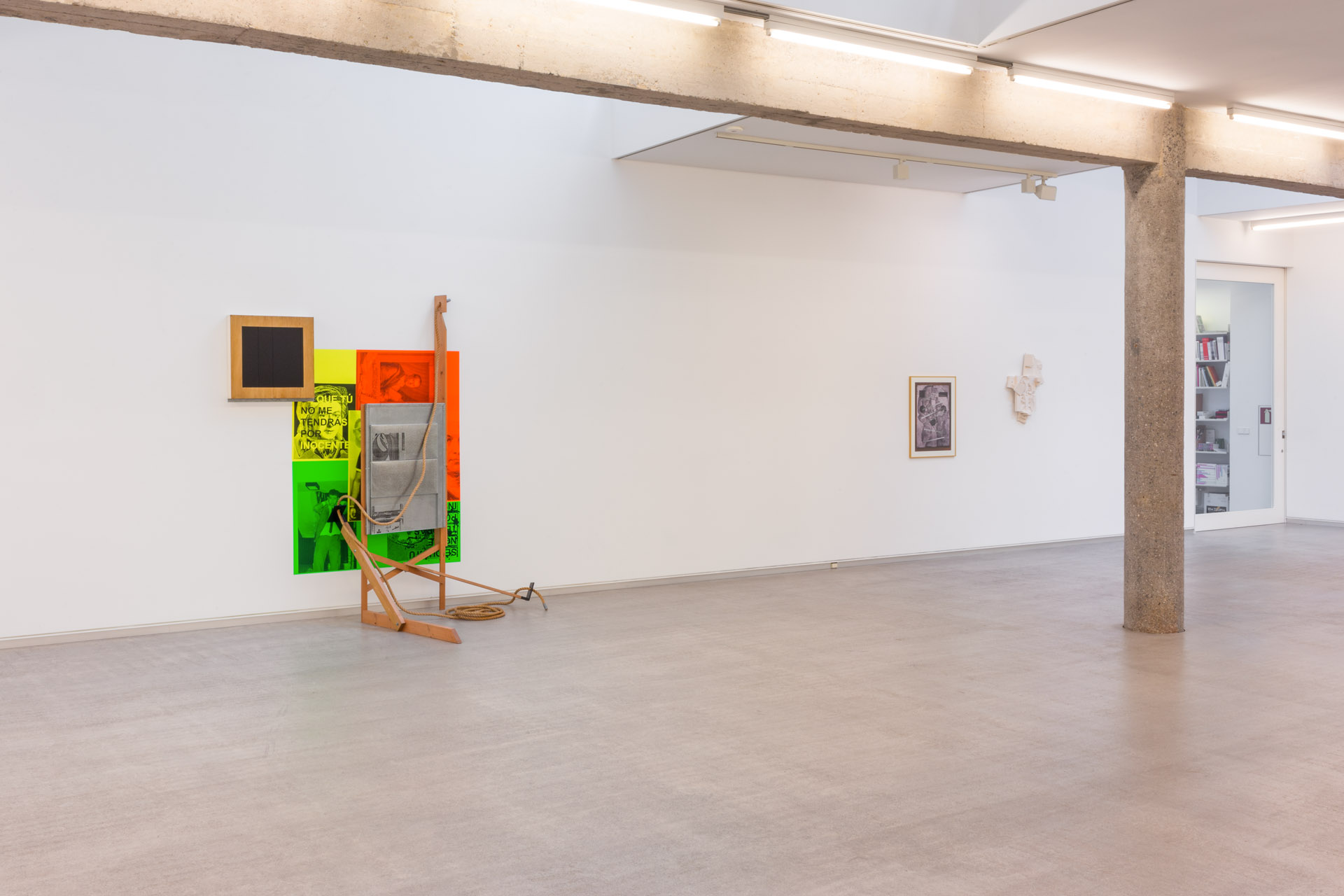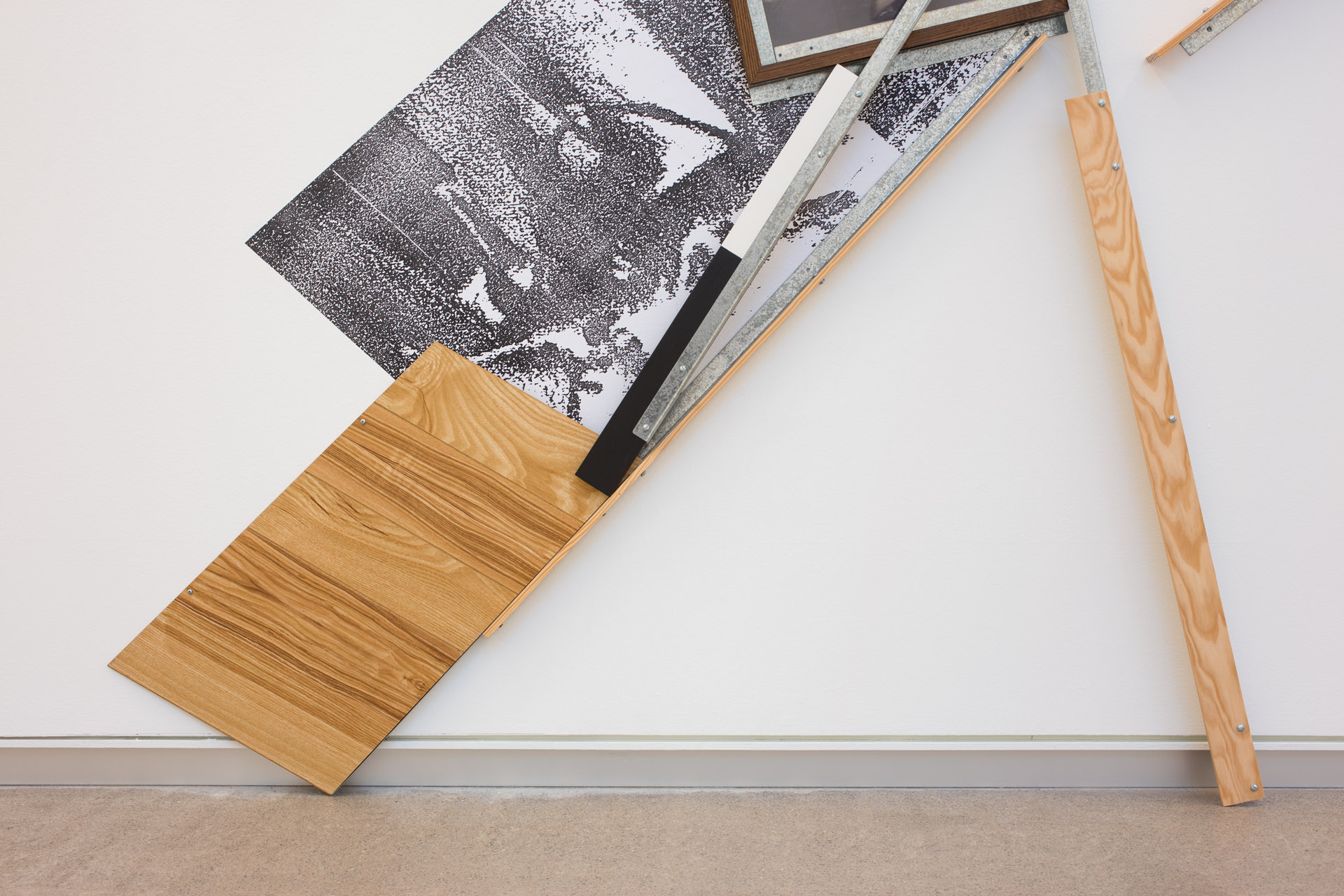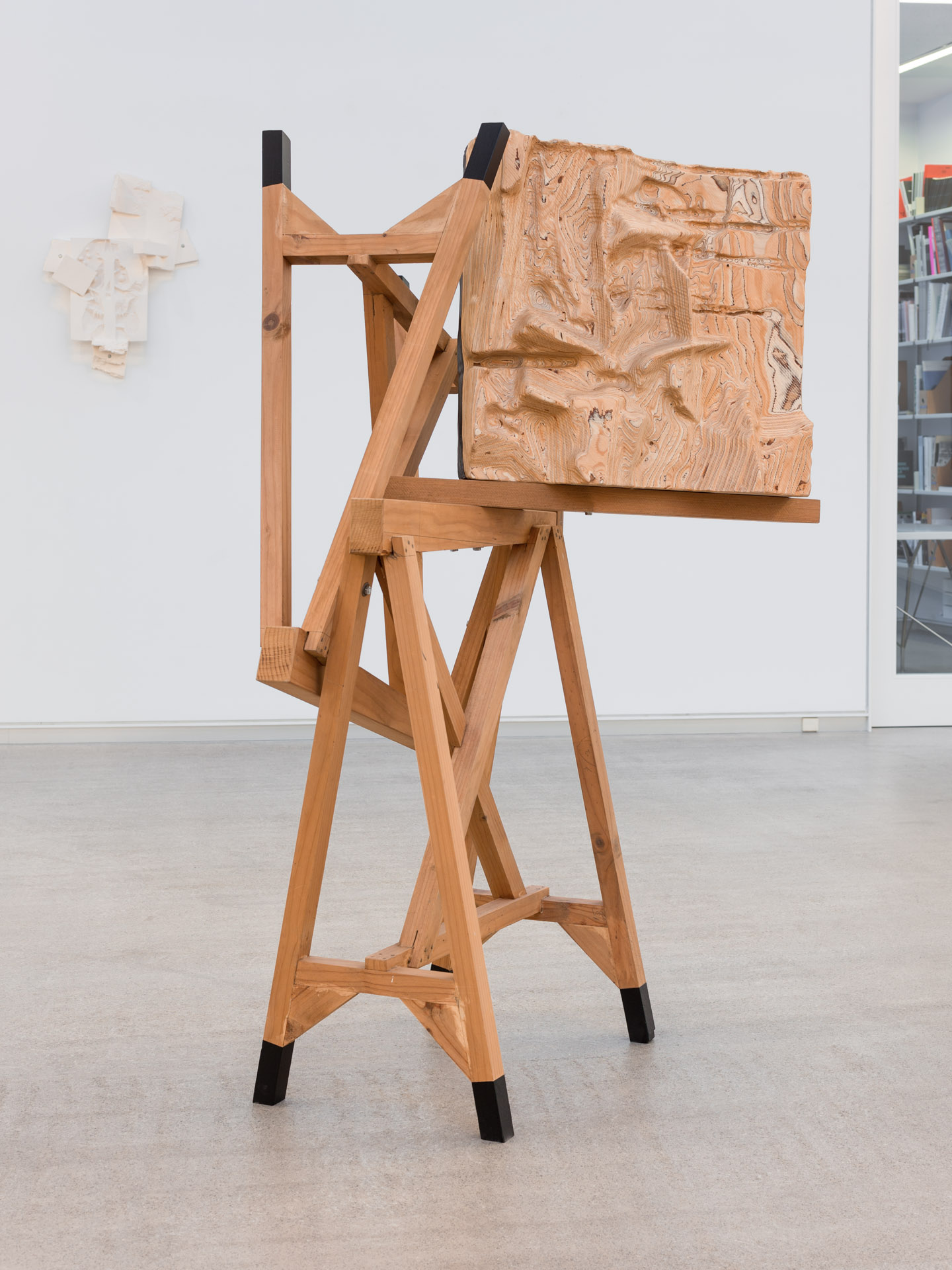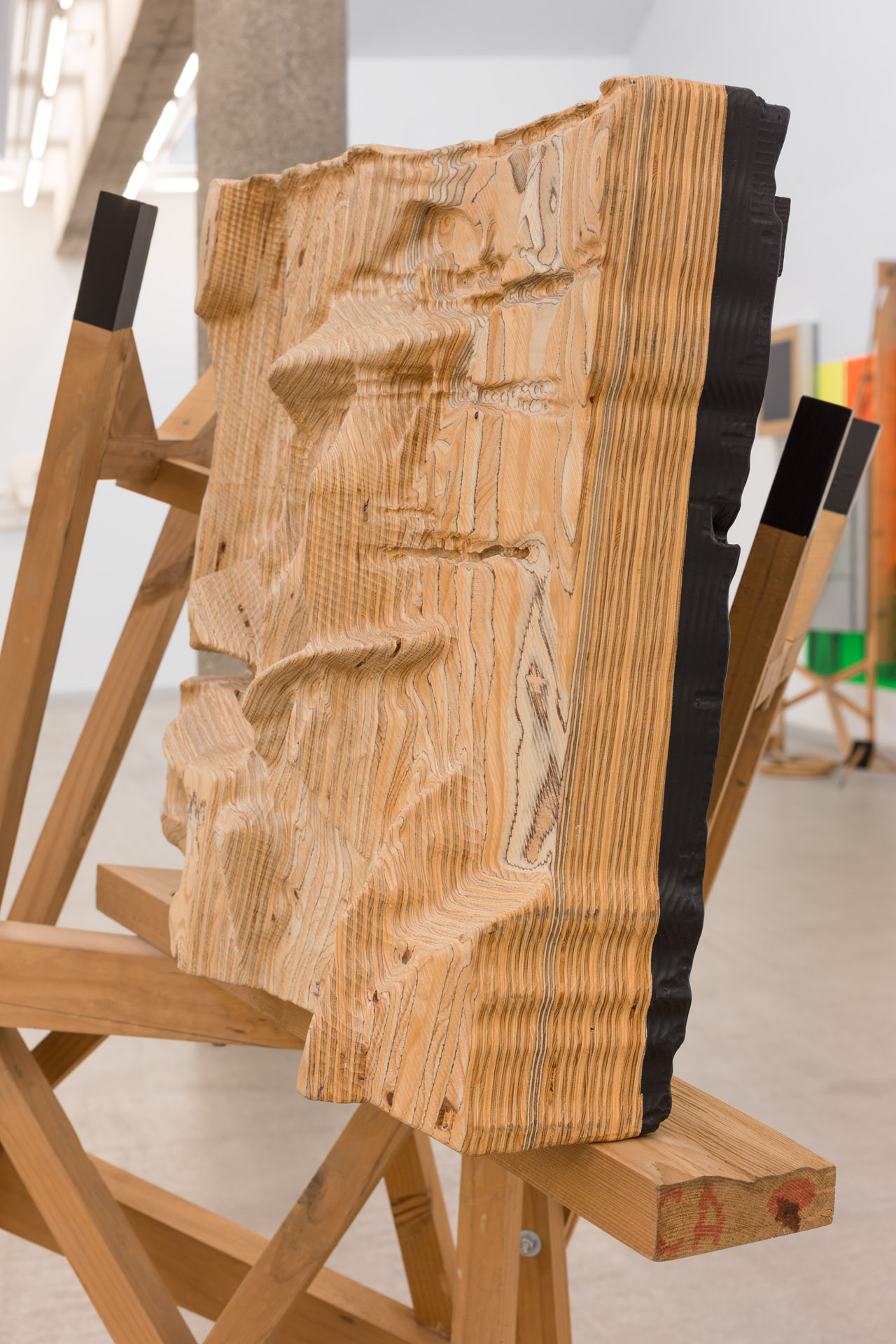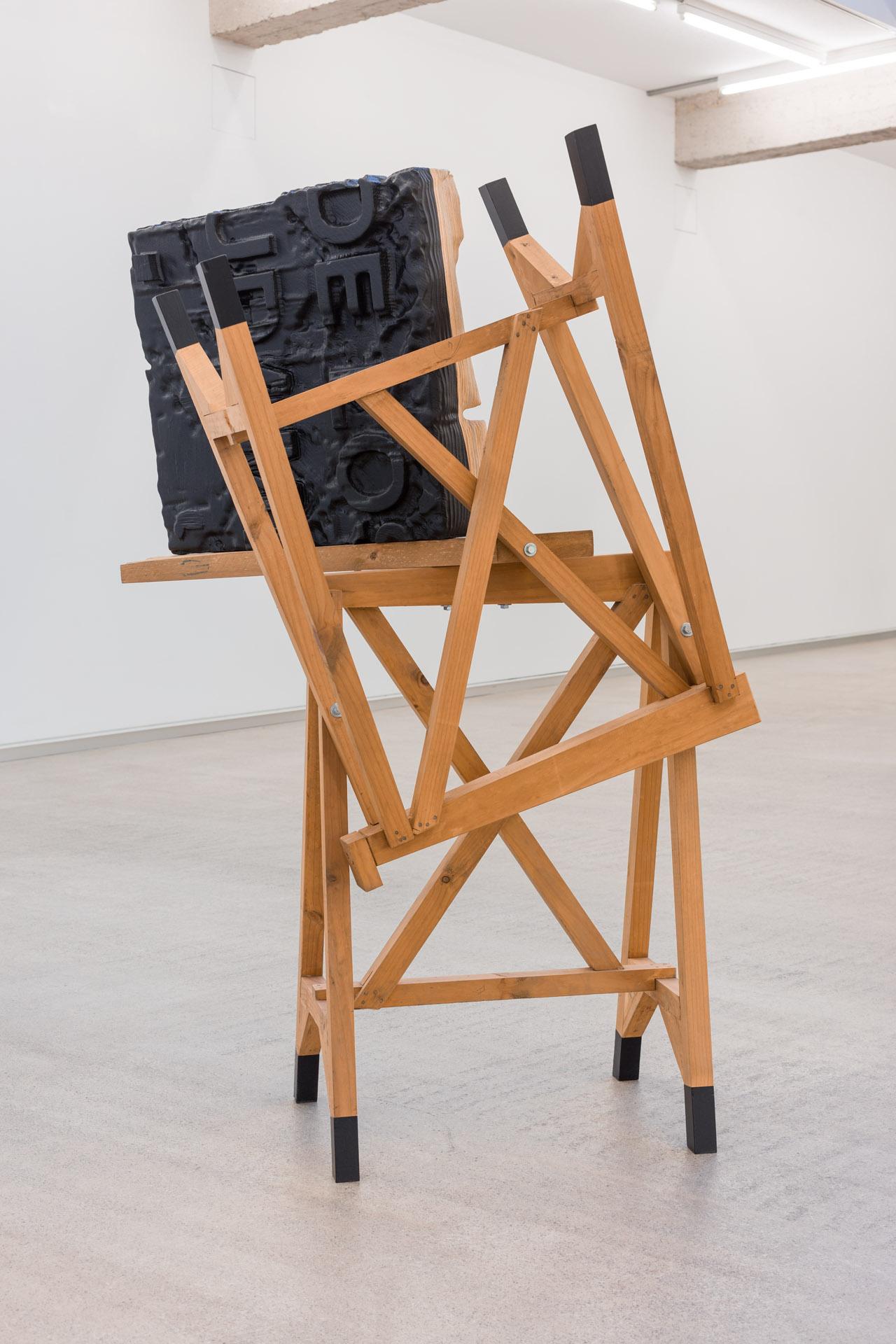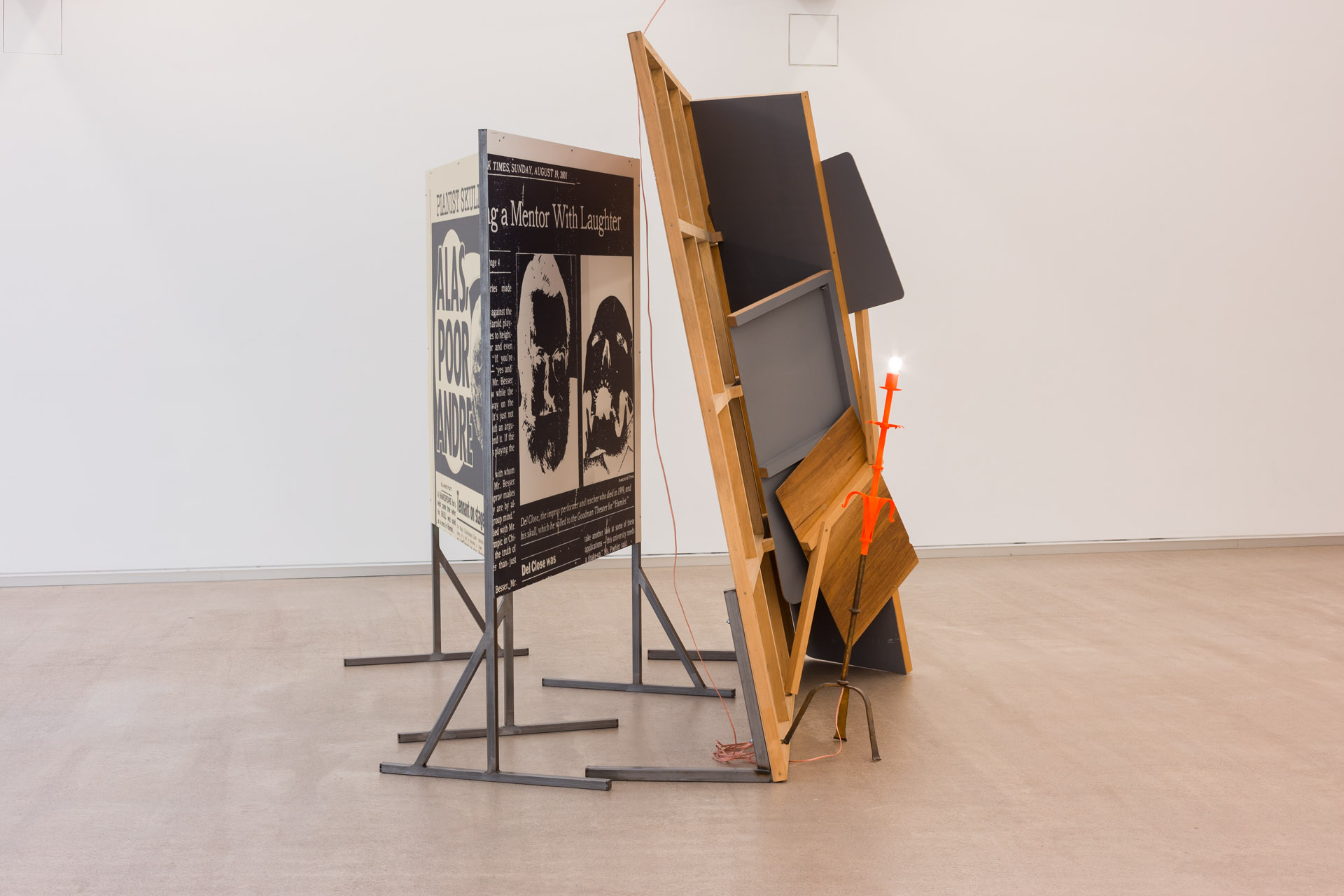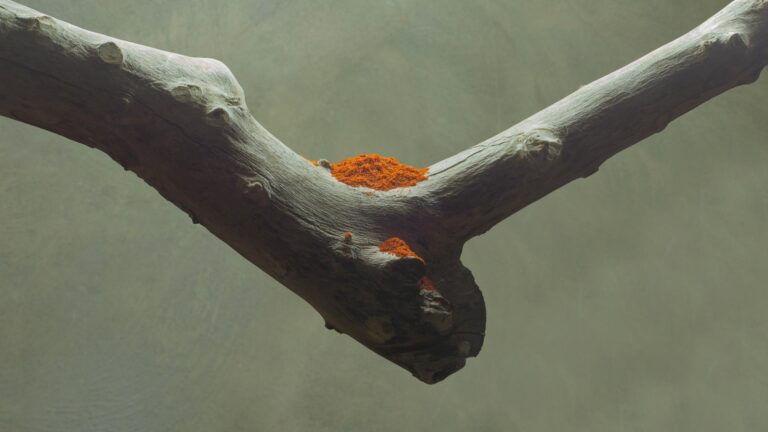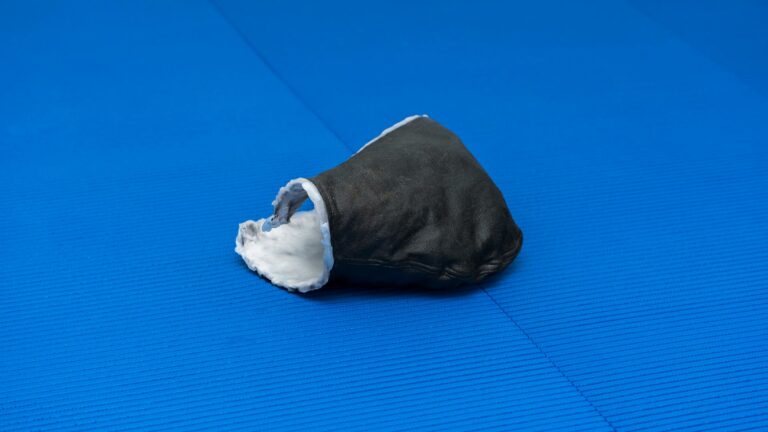Artist: Txomin Badiola
Exhibition title: I burst with laughter I die of sadness
Venue: CarrerasMugica, Bilbao, Spain
Date: March 5 – May 7, 2021
Photography: Daniel Mera / all images copyright and courtesy of the artist and CarrerasMugica, Bilbao
—Do you have a title for your exhibition?
—Yes, of course!
—What do you mean ‘of course’?
—Because they’ve always had one.
—So, what’s the title of this one?
—I burst with laughter. I die of sadness.
—(…)
—(…)
—Oh!
—Oh? You don’t like it.
—I’m not sure … it’s just that your titles
are usually …
—(…)
—It’s strange.
—If times are strange, working
circumstances are strange, the possibility
of doing anything is strange, I don’t see
why the title wouldn’t be strange.
—It’s not just that it’s strange, it’s not
what you’d expect from you.
—So, it’s not what you’d expect from me!
What is it that you would expect from
me?
—Something more serious, more incisive.
—It’s as serious and incisive as I could
think of.
—It’s a little … Fuck you!
—Maybe, but it would be me who’s most
fucked.
—Why do you say that?
—For my last one here I wrote that
whenever I have an exhibition I always
imagine that it will be my last.
—It scares me when you talk like that,
though I think you’re laying it on a bit. I’d
like to think it’s just your way of talking.
—It was nearly true.
—What?
—That it was my last. In the five years
since the last one, I have done nothing.
—That’s not true.
—I mean nothing material.
—Well, in the end, it isn’t true.
—Six months ago I was sure that it was
all over, and it didn’t feel so bad.
—I told you you’re scaring me …
—Scared? There’s many ways of doing
things, and many things to do. I’m scared
of the conventional routine forced on an
artist in order to be considered as such.
—What has that to do with the title?
—Isn’t it obvious?
—No, tell me why it should be.
—It’s just that, at least for me, right now,
in art and in life, I want to laugh and to
cry at the same time.
—OK, go on.
—It’s like a fit of hysteria at the end of an
impossible train of thought.
—But that could block you, and we are
talking about the title of the exhibition of
a series of works you have made.
—I know, it sounds contradictory.
—That’s productive in one way.
—I believe that I’ve put hysteria to work.
If you can no longer listen to your mind
you have to listen to your body.
—How does that work?
—Without thinking, letting yourself go.
—(…)
—Letting yourself be carried along to
wherever and by whatever.
—By whom? Why?
—Something that serves to set it in
motion and then take charge of the
convulsion.
—In that case …
—In that case, that something was images
from way back that you could sense had a
destination that they never reached at the
time …
—(…)
—…because they never found a way that
would let them.
—Until now. And, what is it that you have
found at the end of the road?
—The ghosts of what is to come cannot
be anything but vanitas…
—Hold on …
—…because in the end we all know our
final destination.
—You’re scaring me.
They are nine sculptures, though some of them don’t look like it, two of them made of various freestanding units. The one that gives its name to the exhibition is made up of five elements that come from another one made five years ago. Each one is independent, although taken together they form a kind of poem: I DIE WITH LAUGHTER OF SADNESS I BURST I BURST I DIE I BURST WITH LAUGHTER OF SADNESS I DIE. Ardor y manía (Ardour and Mania) is at once a three-dimensional version of previous ones and a reorganization of elements from a piece from eleven years ago. In the gravedigger’s monologue in Hamlet, the prince finds the remains of the court jester and laments (“Alas poor Yorick!”) that someone who embodied happiness, joie de vivre, jesting and jokes, has been reduced to a dirty, abhorrent skull. Alas poor Andre makes use of two pieces of news—here turned into posters (produced eleven years ago for another project) glimpsed between a collapsing architecture—in which two people (one of who is Andre) on dying left their own skulls to two theatres so that they could use them in the scene of the famous monologue on the vanity of life. Bastardos blancos (White Bastards) are four pieces that recall another four from the previous exhibition but at a point of increasing evanescence. Monumento y De los udam (Monument and On the Udams) are countermonuments at the service of an improbable posterity. Flujos, mutaciones, filiaciones (Flows, Mutations, Affiliations) is a piece that did not make the cut for the last exhibition because it was waiting for this one, its rightful place. Winckelmann and Lessing are two figures from the Enlightenment who knew that art could well be the unconsciousness of history. Malevich created an icon with an internally torn serenity, the beginning and end, alpha and omega. In No me tendrás por inocente (Don’t think I’m innocent) these images (begun twelve years ago) are inadvertently structured around a funeral artefact. Finally, Esos desechos is literally just that, those remnants, a series of discards from different periods put to work in their will to exist.
Txomin Badiola, I burst with laughter I die of sadness, 2021, exhibition view, CarrerasMugica, Bilbao
Txomin Badiola, I burst with laughter I die of sadness, 2021, exhibition view, CarrerasMugica, Bilbao
Txomin Badiola, I burst with laughter I die of sadness, 2021, exhibition view, CarrerasMugica, Bilbao
Txomin Badiola, I burst with laughter I die of sadness, 2021, exhibition view, CarrerasMugica, Bilbao
Txomin Badiola, I burst with laughter I die of sadness, 2021, exhibition view, CarrerasMugica, Bilbao
Txomin Badiola, I burst with laughter I die of sadness, 2021, exhibition view, CarrerasMugica, Bilbao
Txomin Badiola, I burst with laughter I die of sadness, 2021, exhibition view, CarrerasMugica, Bilbao
Txomin Badiola, I burst with laughter I die of sadness, 2021, exhibition view, CarrerasMugica, Bilbao
Txomin Badiola, I burst with laughter I die of sadness, 2021, exhibition view, CarrerasMugica, Bilbao
Txomin Badiola, I burst with laughter I die of sadness, 2021, exhibition view, CarrerasMugica, Bilbao
Txomin Badiola, I burst with laughter I die of sadness, 2021, exhibition view, CarrerasMugica, Bilbao
Txomin Badiola, I burst with laughter I die of sadness, 2021, exhibition view, CarrerasMugica, Bilbao
Txomin Badiola, “Ardor Y Mania”, 2010-21 Construccion En Madera, Acero Impreso, Goma Y Pintura Al Oleo Sobre Papel, 116 X 100 X 12 Cm
Txomin Badiola, “Alas Poor Andre”, 2010-20 Construccion En Madera Y Acero Parcialmente Pintado E Impreso 240 X 250 X 250 Cm
Txomin Badiola, “Esos Desechos”, 2018-20, Fotografia Enmarcada, Madera Parcialmente Pintada, Impresion Sobre Papel Y Acero Galvanizado, 210x47x10cm
Txomin Badiola, I burst with laughter I die of sadness, 2021, exhibition view, CarrerasMugica, Bilbao
Txomin Badiola, I burst with laughter I die of sadness, 2021, exhibition view, CarrerasMugica, Bilbao
Txomin Badiola, I burst with laughter I die of sadness, 2021, exhibition view, CarrerasMugica, Bilbao
Txomin Badiola, “Bastardo Blanco 1”, 2020, Yeso Y Madera Estucada, Aluminio 57x65x21cm
Txomin Badiola, “Bastardo Blanco 1”, 2020, Yeso Y Madera Estucada, Aluminio 57x65x21cm
Txomin Badiola, “Bastardo Blanco 3”, 2020, Yeso Y Madera Estucada, Aluminio 68x60x17cm
Txomin Badiola, “Bastardo Blanco 3”, 2020, Yeso Y Madera Estucada, Aluminio 68x60x17cm
Txomin Badiola, “Bastardo Blanco 4”, 2020, Yeso Y Madera Estucada, Aluminio, 75x57x17cm
Txomin Badiola, “De Los Udamn (Lo Que El Signo Esconde)”, 2010-21, Ensamblaje De Madera Parcialmente Pintada, 163 X 91 X 100 cm
Txomin Badiola, “De Los Udamn (Lo Que El Signo Esconde)”, 2010-21, Ensamblaje De Madera Parcialmente Pintada, 163 X 91 X 100 cm
Txomin Badiola, “De Los Udamn (Lo Que El Signo Esconde)”, 2010-21, Ensamblaje De Madera Parcialmente Pintada, 163 X 91 X 100 cm
Txomin Badiola, “De Los Udamn (Lo Que El Signo Esconde)”, 2010-21, Ensamblaje De Madera Parcialmente Pintada, 163 X 91 X 100 cm
Txomin Badiola, “De Los Udamn (Lo Que El Signo Esconde)”, 2010-21, Ensamblaje De Madera Parcialmente Pintada, 163 X 91 X 100 cm
Txomin Badiola, “Monumento” 2020, Plastico Y Madera Estucados, Caballetes Y Chapa De Aluminio Parcialmente Pintados Y Tela Negra, 220 X 139 X 95 cm
Txomin Badiola, “Monumento” 2020, Plastico Y Madera Estucados, Caballetes Y Chapa De Aluminio Parcialmente Pintados Y Tela Negra, 220 X 139 X 95 cm
Txomin Badiola, “Monumento” 2020, Plastico Y Madera Estucados, Caballetes Y Chapa De Aluminio Parcialmente Pintados Y Tela Negra, 220 X 139 X 95 cm
Txomin Badiola, “Monumento” 2020, Plastico Y Madera Estucados, Caballetes Y Chapa De Aluminio Parcialmente Pintados Y Tela Negra, 220 X 139 X 95 cm
Txomin Badiola, “Monumento” 2020, Plastico Y Madera Estucados, Caballetes Y Chapa De Aluminio Parcialmente Pintados Y Tela Negra, 220 X 139 X 95 cm
Txomin Badiola, “Alas Poor Andre”, 2010-20 Construccion En Madera Y Acero Parcialmente Pintado E Impreso 240 X 250 X 250 cm
Txomin Badiola, “Alas Poor Andre”, 2010-20 Construccion En Madera Y Acero Parcialmente Pintado E Impreso 240 X 250 X 250 cm
Txomin Badiola, “Alas Poor Andre”, 2010-20 Construccion En Madera Y Acero Parcialmente Pintado E Impreso 240 X 250 X 250 cm
Txomin Badiola, “Alas Poor Andre”, 2010-20 Construccion En Madera Y Acero Parcialmente Pintado E Impreso 240 X 250 X 250 cm
Txomin Badiola, “Alas Poor Andre”, 2010-20 Construccion En Madera Y Acero Parcialmente Pintado E Impreso 240 X 250 X 250 cm
Txomin Badiola, “Alas Poor Andre”, 2010-20 Construccion En Madera Y Acero Parcialmente Pintado E Impreso 240 X 250 X 250 cm




